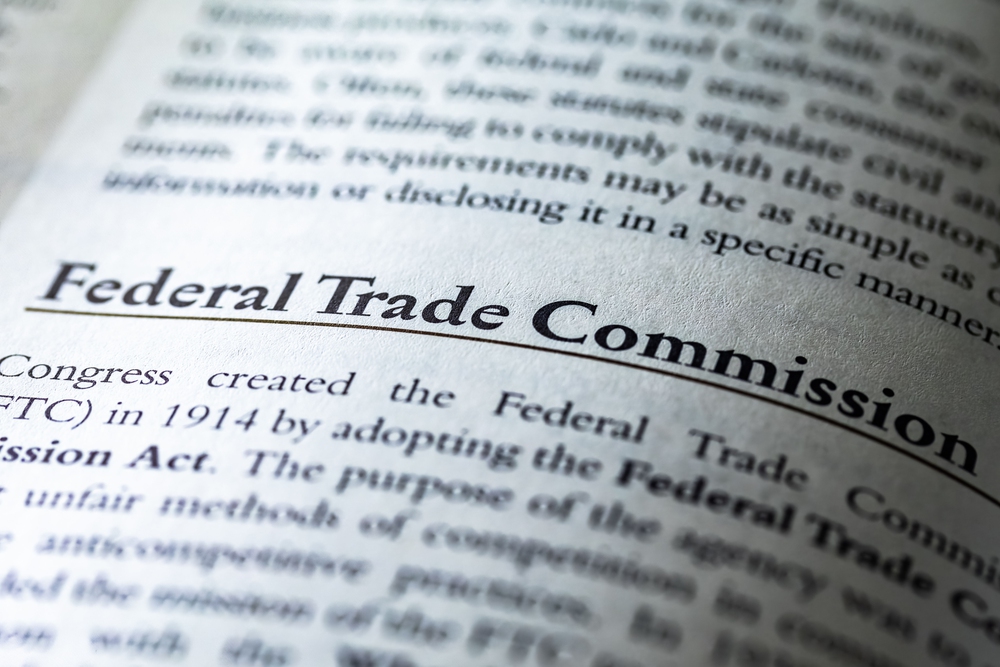
How Marketers Can Stay Ahead Using the European Accessibility Act (EAA)
Sep 20, 2023 3 minutes
Introduced in 2019 by the European Union, the European Accessibility Act (EAA) serves as a testament to the EU’s commitment to crafting a more inclusive digital and physical space.
But the ramifications of this act stretch far beyond European borders. For online business owners, marketers, and even industries involved in crafting physical digital devices, understanding and adapting to the EAA is no longer just an option—it’s imperative. Especially when considering its looming deadline of June 28, 2025.
Understanding the EAA: A Quick—But Deep—Dive
Amidst the vast ocean of regulations and standards that companies navigate, the European Accessibility Act (EAA) emerges as a lighthouse for many, guiding the way towards a more inclusive digital environment. But what precisely does the EAA entail? Let’s break it down.
Origin and Objective
Established by the European Union in 2019, the EAA was not just another piece of legislation added to the books. Its inception was driven by a singular, unwavering purpose: to ensure that products and services, both digital and physical, are accessible to all, particularly those with disabilities.
This act recognizes the simple truth that in our digital age, accessibility isn’t just about physical spaces but about ensuring everyone can engage with, use, and benefit from digital products and services.
Scope
When we talk about the EAA, its breadth is truly impressive. It isn’t limited to the corners of websites or the interfaces of mobile apps. The act extends its reach to cover self-service terminals, ticketing machines, ATMs, smart TVs, smartphones, and a plethora of other digital devices.
In essence, any product or service interfacing with the European market must have its doors open to everyone, no exceptions.
The Deadline
The clock is ticking. Companies offering products or services to EU customers have until June 28, 2025, to ensure they comply with the EAA.
And this isn’t just for businesses rooted in the EU. Any international company catering to this vast market needs to have the EAA on their radar, regardless of where their headquarters might be.
The Landscape Before EAA
Prior to the EAA, a tapestry of regulations and directives aimed to carve a path towards a more inclusive digital and physical environment. Let’s navigate through these earlier measures to better appreciate the advancements the EAA brings.
EU Web Accessibility Directive
Predating the EAA, these web content accessibility guidelines (WCAG 2.1) specifically targeted public sector websites and mobile applications in Europe. Encompassing a vast array of digital interfaces from school platforms to public service portals, it aimed to make the digital face of public services more approachable and usable for all citizens.
Notably, since it was implemented before Brexit, it also applies to the UK.
Public Sector Bodies Accessibility Regulations
Zeroing in on the UK, this specific regulation was introduced to ensure that websites and mobile applications of public sector bodies are accessible to all, harmonizing with the standards set by the EU. This means that even outside of direct EU oversight, the UK maintained a commitment to digital inclusivity.
EN 301 549
Differing slightly in its approach, EN 301 549 is more of a technical standard rather than a directive or regulation. It outlines the accessibility requirements for information and communication technology (ICT) products and services. While it meticulously sets the parameters for accessibility features, it doesn’t delve into the legal consequences of failing to meet these standards, a gap that the EAA addresses.
The preceding landscape paints a picture of a Europe committed to fostering inclusivity long before the EAA. However, with the EAA’s introduction, there’s a clear shift in focus from primarily public sectors to including the private sector, highlighting the all-encompassing vision of a truly inclusive European market.
Compliance is key. How is your business faring?
Private Sector Implications: The EAA’s Broader Reach
Historically, much of the emphasis on digital and physical accessibility was placed on public sector entities. The European Accessibility Act has recalibrated this focus, bringing the private sector firmly into the spotlight.
A Vastly Expanded Scope
From e-commerce platforms to entertainment apps, the EAA casts a wide net. Beyond the digital realm, it covers physical devices like ticketing machines, smart TVs, e-readers, and more. For businesses, this means a holistic reevaluation of how products and services are designed, developed, and delivered.
The Power of Inclusivity
At the heart of the EAA is the pursuit of an inclusive user experience. By complying, companies aren’t merely ticking off a regulatory box; they are embracing a more inclusive ethos. This ethos resonates with audiences far and wide, potentially opening up a market of over 80 million people with disabilities in EU countries alone.
Boosting Brand Value
In a world where corporate responsibility and brand values play a significant role in consumer choices, adhering to the EAA can propel a brand’s reputation. It sends a clear message: the brand prioritizes and values every single user, irrespective of their physical or cognitive abilities.
Navigating Legal Waters
Compliance isn’t just about goodwill; it’s also about risk mitigation. The EAA brings with it legal teeth. Non-compliance can result in fines, potential legal actions, or reputational damages. For businesses, especially those in high-risk sectors, this underscores the importance of proactive alignment with EAA standards.
Innovation, Competitive Advantage, and the EAA
In the business landscape, innovation is not just about crafting the next big product or launching a groundbreaking service. True innovation lies in anticipating market needs and staying ahead of regulatory curves. The European Accessibility Act serves as both a catalyst and a testament to this innovative spirit.
Risk Mitigation as a Starting Point
At its core, aligning with the EAA is about safeguarding a business. By taking proactive measures to ensure accessibility standards, companies not only mitigate potential legal risks but also sidestep the pitfalls of negative publicity.
In the age of instant information, a company’s reputation can be tarnished overnight, and being EAA-compliant is a surefire way to reinforce brand credibility.
Innovation Through Accessibility
There’s a misconception that accessibility limits design or functionality. On the contrary, focusing on accessibility can lead to breakthrough innovations. By aiming to make products or services usable for everyone, businesses might discover more intuitive designs, efficient processes, or untapped market needs.
Think about voice assistants or speech-to-text functionalities – initially developed with accessibility in mind but now mainstreamed and embraced globally.
Standing Out in a Competitive Market
As the 2025 deadline approaches, businesses that have already aligned with EAA standards will inevitably stand out. This early adoption becomes a unique selling proposition, highlighting a brand’s commitment to inclusivity and forward-thinking. In a saturated market, this could be the differentiating factor that attracts and retains customers.
Is risk mitigation holding your business back? We can help!
Final Thoughts: Accessibility as the Future of Business
As we approach the June 28, 2025, deadline for European Accessibility Act compliance, businesses across the globe find themselves at a critical crossroads. The choice isn’t just about adhering to a set of regulations; it’s about recognizing and embracing the transformative power of accessibility.
More than Compliance
True, the EAA comes with legal imperatives. But forward-thinking businesses see beyond the immediacy of compliance. They recognize that accessibility isn’t just a mandate; it’s an opportunity. An opportunity to redefine accessible product design, to reach previously untapped markets, and to champion the cause of inclusivity in a world increasingly defined by its diversity.
Driving Global Change
The ripple effects of the EAA are being felt far beyond the borders of EU member states. It serves as a clarion call for businesses everywhere, signaling the importance and urgency of creating a more accessible world. As companies from different corners of the globe heed this call, we witness the dawn of a new era where businesses aren’t just profit-driven but purpose-driven.
Future-Proofing the Business Landscape
As technology evolves and the digital landscape becomes an intrinsic part of our daily lives, the importance of accessibility will only grow. Companies that align with the EAA today are not only securing their present but also ensuring they remain relevant and competitive in the future.
A Collective Responsibility
While the EAA might be an EU directive targeted at businesses, its ethos speaks to all of us. It underscores the collective responsibility we bear to create a world where everyone, regardless of their physical or cognitive abilities, can participate fully and equally.
Embracing the Future with DirectPayNet: Your Trusted Partner
In the evolving landscape of e-commerce and digital accessibility, businesses need partners that understand the complexities of the industry, especially when operating in high-risk sectors. With the impending EAA regulations and the continuous drive for inclusivity, it’s more important than ever to have a payment solutions partner that’s ahead of the curve.
Why Choose DirectPayNet?
- Experience in High-Risk Industries: Having operated extensively in high-risk sectors, DirectPayNet is adept at navigating the intricate challenges these industries present.
- Comprehensive Payment Solutions: From ensuring secure transactions to providing diverse payment options suitable for a global audience, DirectPayNet ensures your business is equipped for success.
- Dedication to Inclusivity: We understand the significance of the EAA and the broader push for digital accessibility. We’re committed to helping our partners achieve and maintain compliance while also ensuring a seamless user experience for all customers.
If your business is seeking a partner that’s not just about payment solutions but also about future-proofing your operations in line with global standards, DirectPayNet is the choice for you.





1 thought on “How Marketers Can Stay Ahead Using the European Accessibility Act (EAA)”